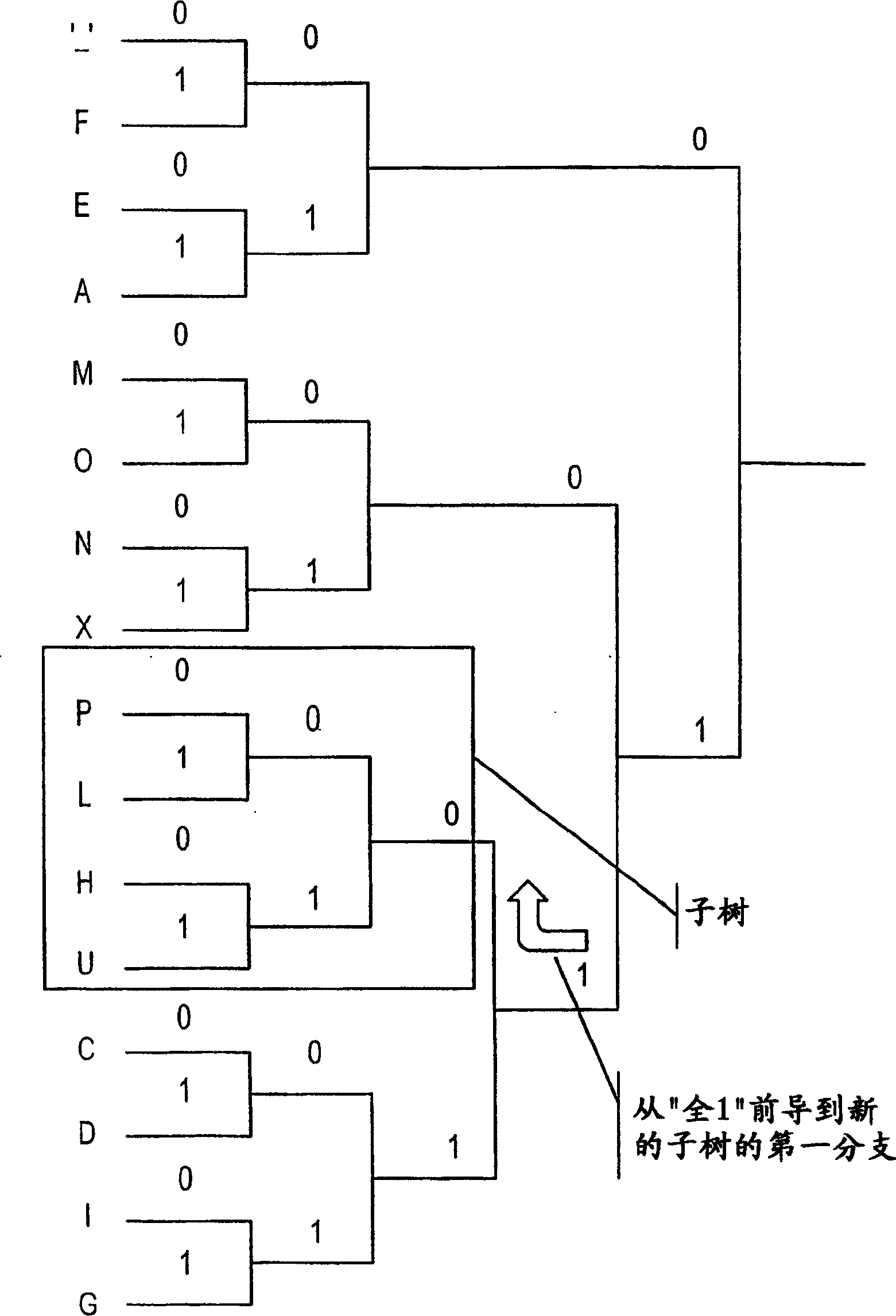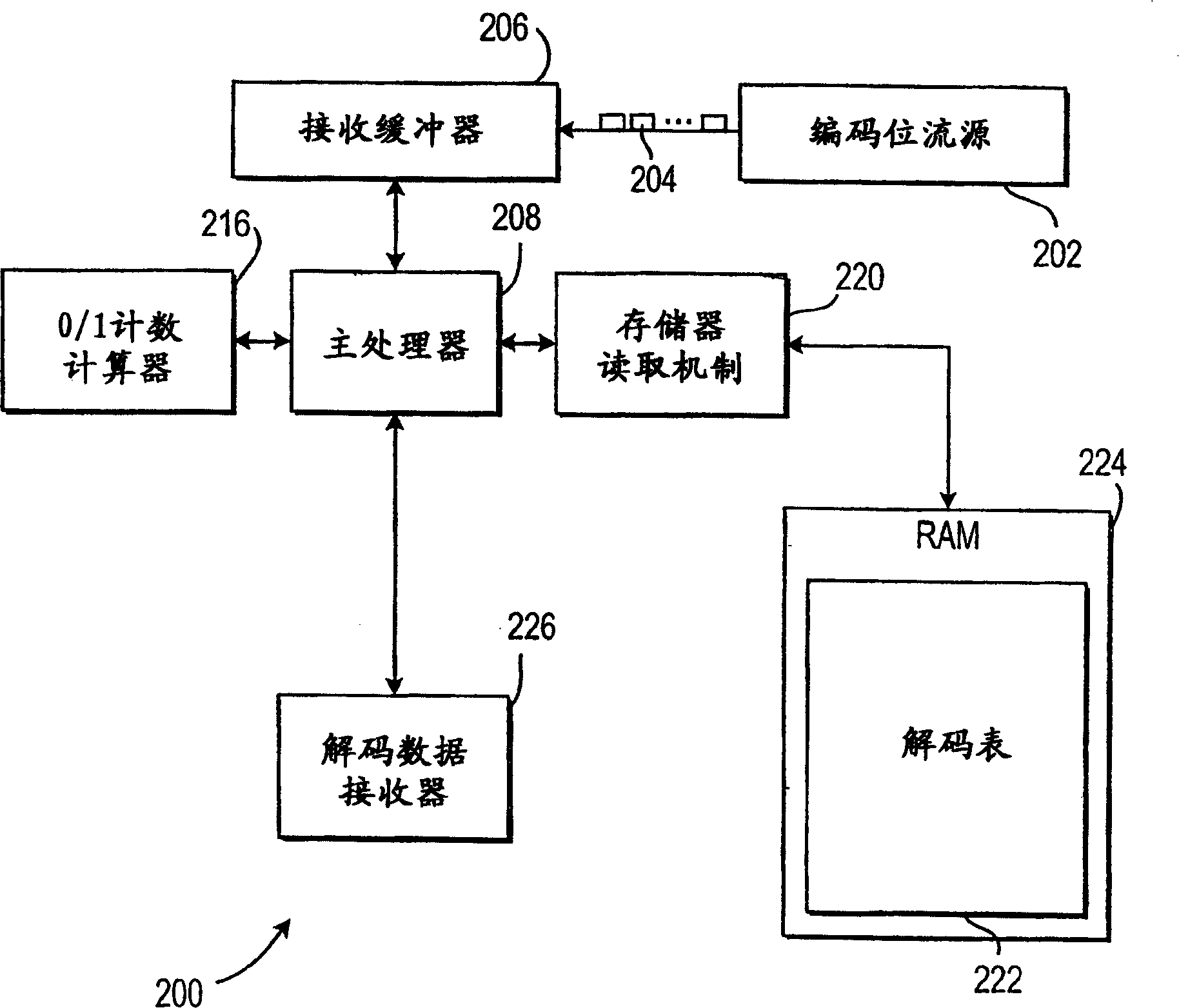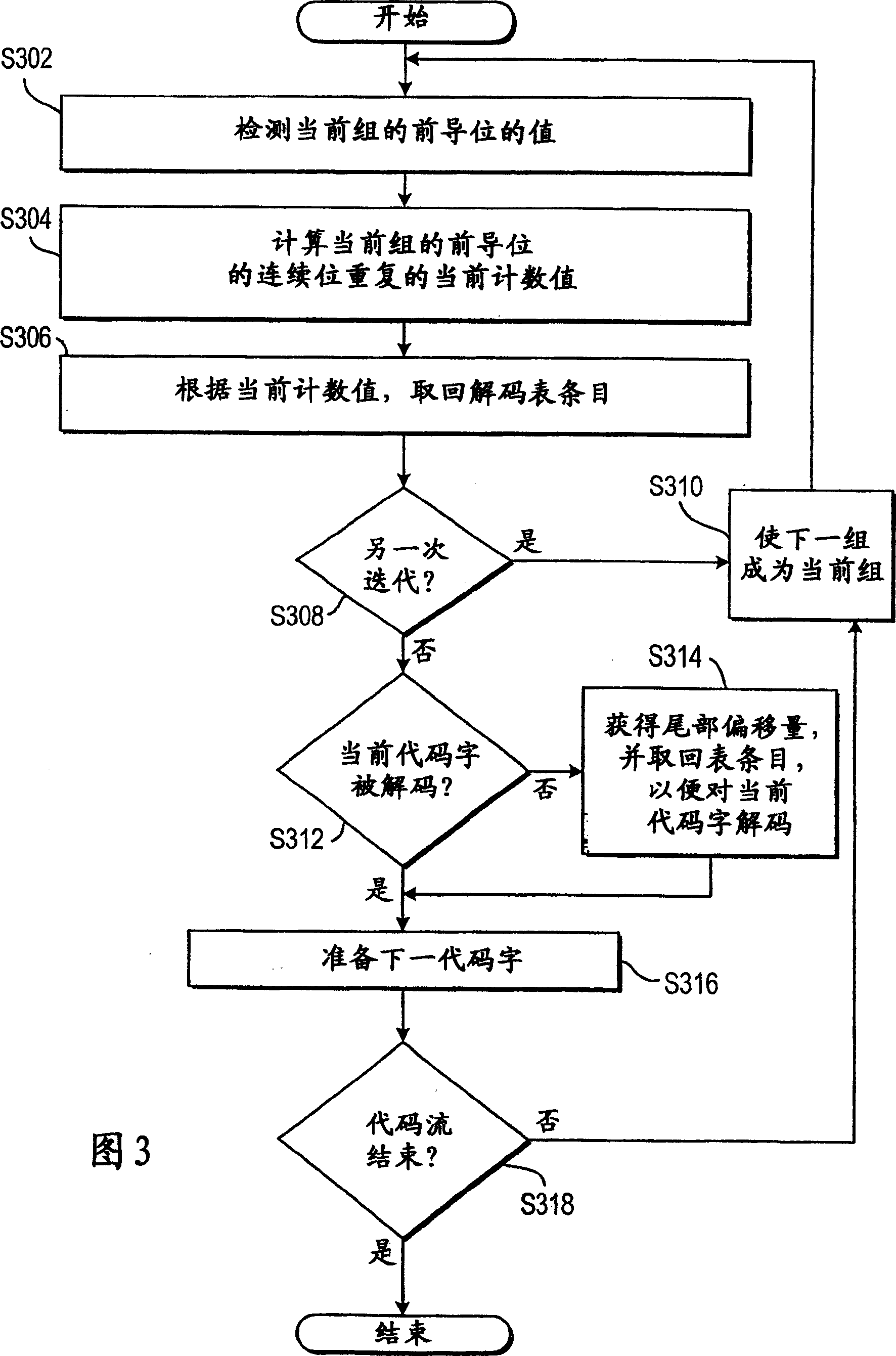Huffman coding
A technology of Huffman coding and code words, which is applied in the field of decoding Huffman coding code words, and can solve the problems of decoding dependence, decoder blocking memory bus, etc.
- Summary
- Abstract
- Description
- Claims
- Application Information
AI Technical Summary
Problems solved by technology
Method used
Image
Examples
Embodiment Construction
[0046] The present invention provides a fast and memory efficient Huffman code stream decoding method. Decoding is based on the detection of bit strings, ie "0000..." and "1111..." strings in the beginning of the codeword. After finding the first n-bit consecutive 1 or 0, search for consecutive 1 or 0 for the remaining bits in the codeword (from n+1 position forward) again until it can be determined that there are only a few bits left in the codeword At this point, they can be used to look up the corresponding symbol from the storage table. This process can be thought of as traveling a "straight line trip" of maximum length in the Huffman tree, and stopping each time a turning point leading to a new "subtree" is detected. Advantageously, the codewords are processed a minimum of 2 bits at a time (leading 0 or 1 and subsequent bits indicating "turning points").
[0047] For example, in figure 1 In , the decoding process for the letter "P→11000" generally proceeds as follows: ...
PUM
 Login to View More
Login to View More Abstract
Description
Claims
Application Information
 Login to View More
Login to View More - R&D
- Intellectual Property
- Life Sciences
- Materials
- Tech Scout
- Unparalleled Data Quality
- Higher Quality Content
- 60% Fewer Hallucinations
Browse by: Latest US Patents, China's latest patents, Technical Efficacy Thesaurus, Application Domain, Technology Topic, Popular Technical Reports.
© 2025 PatSnap. All rights reserved.Legal|Privacy policy|Modern Slavery Act Transparency Statement|Sitemap|About US| Contact US: help@patsnap.com



